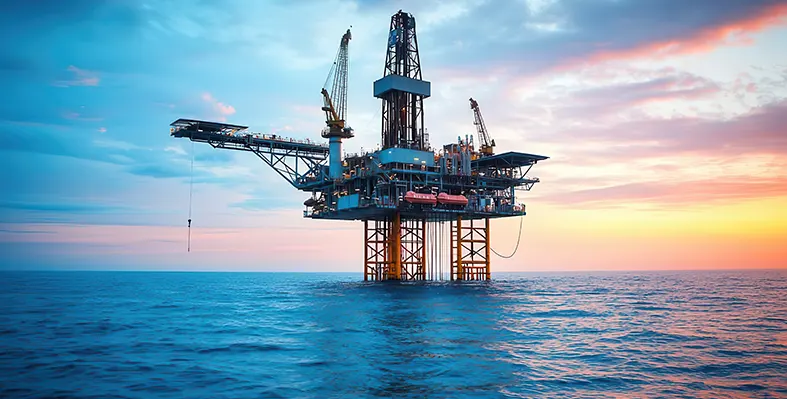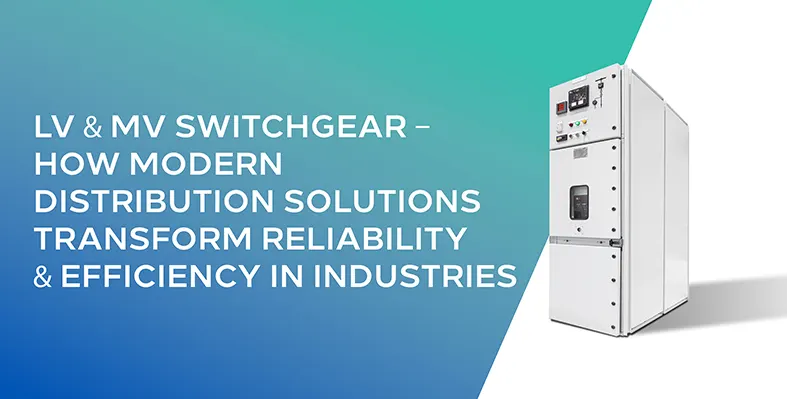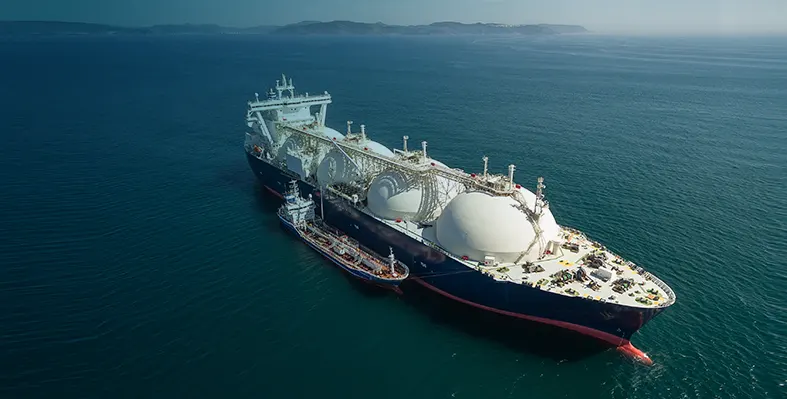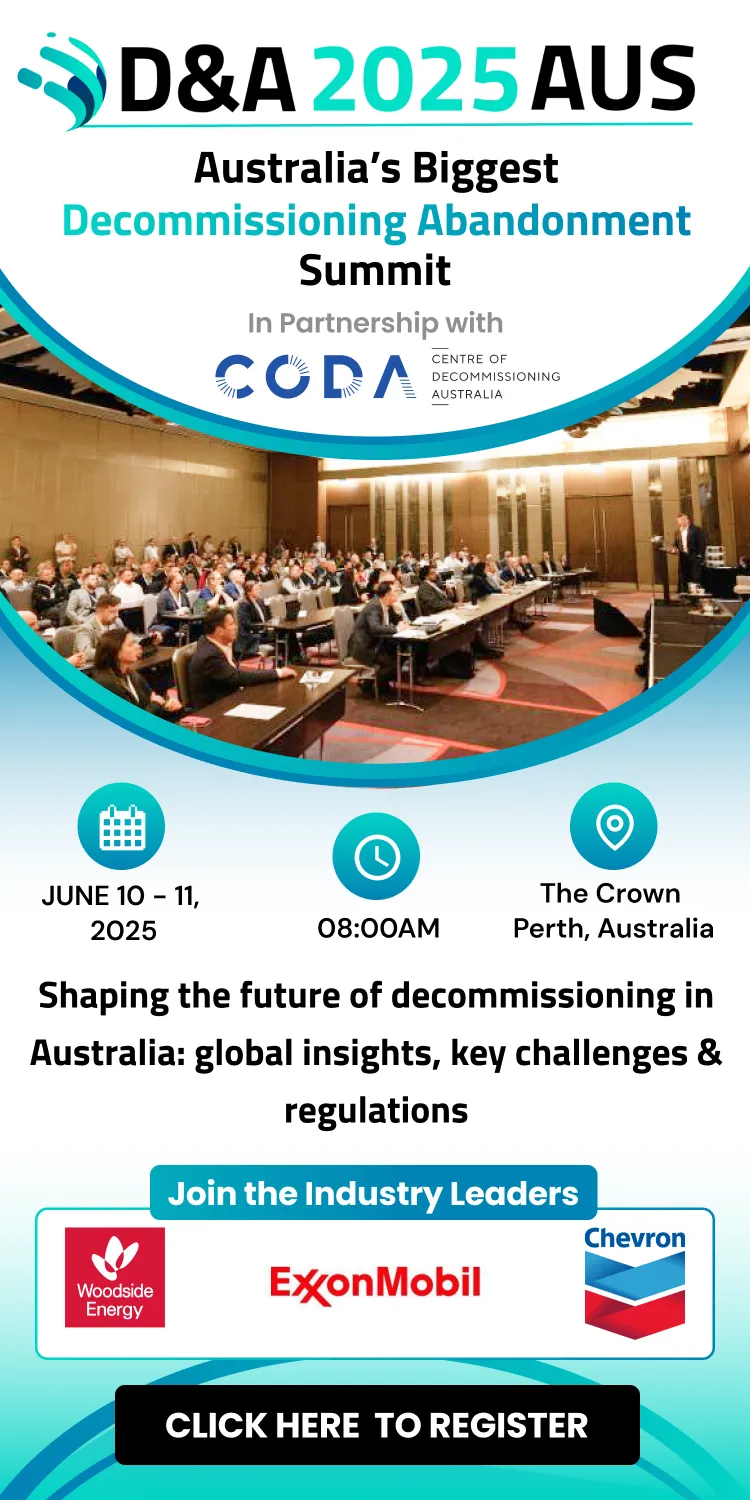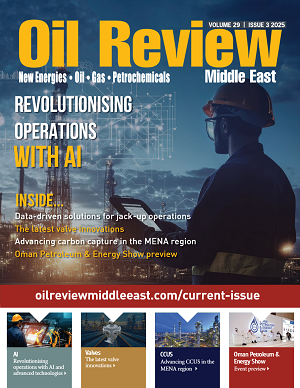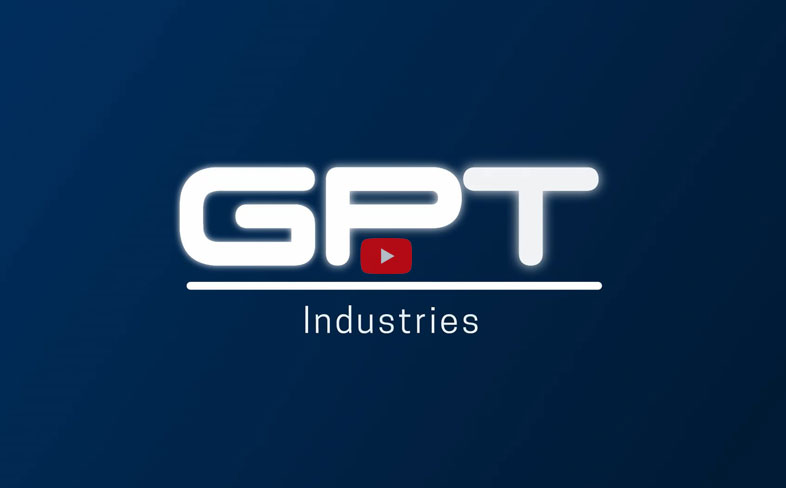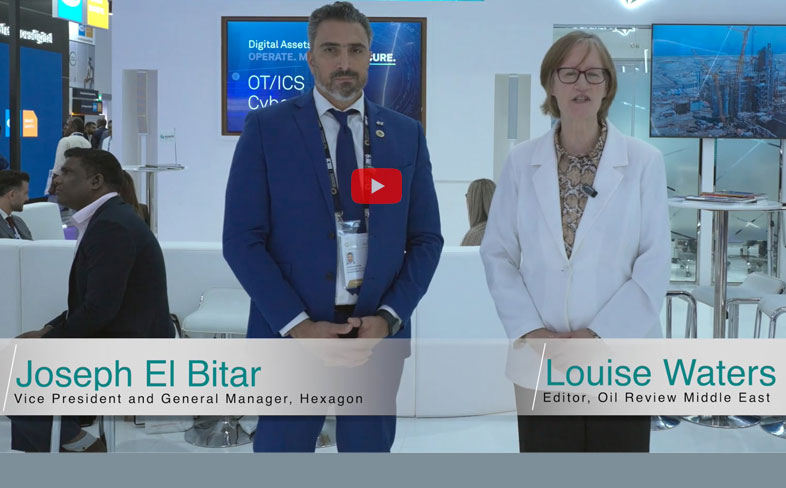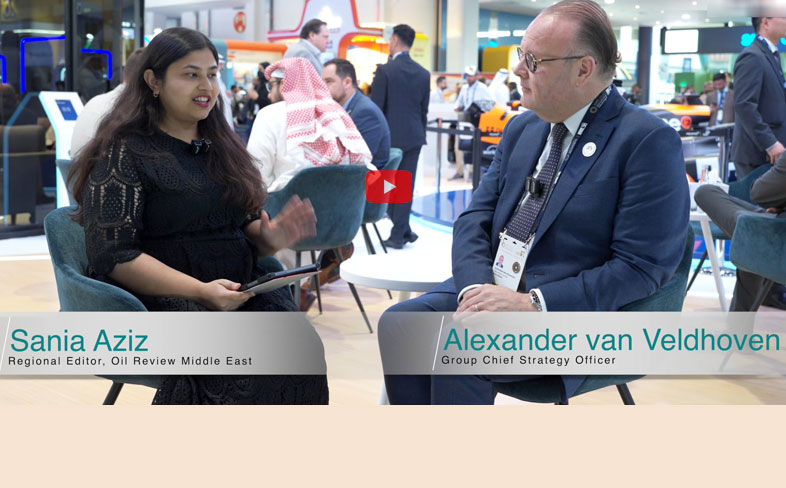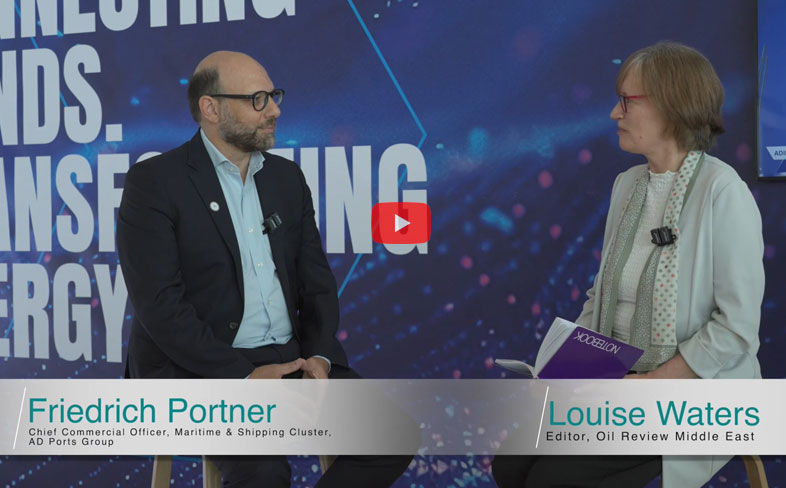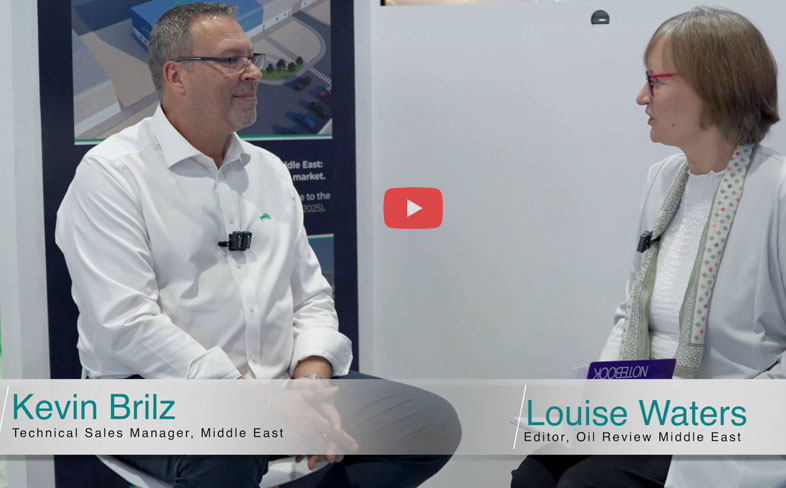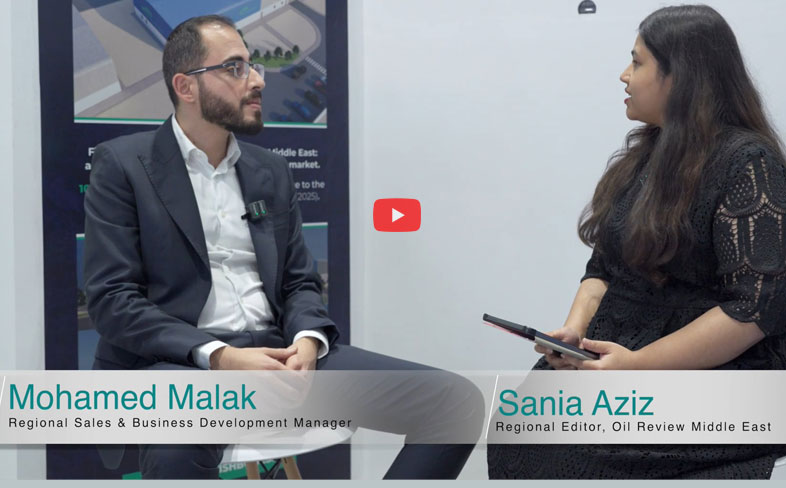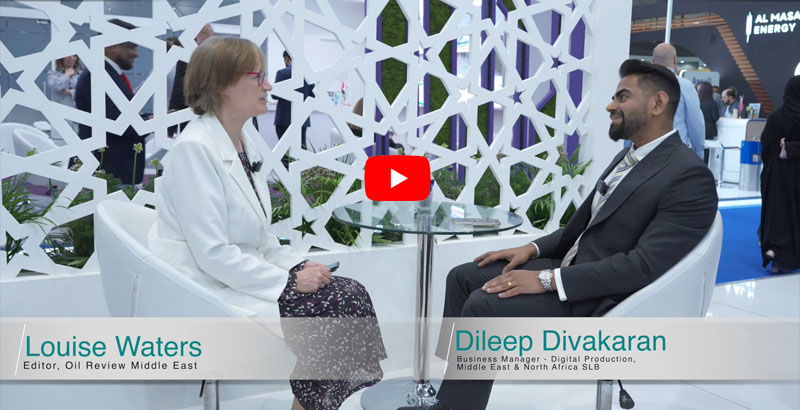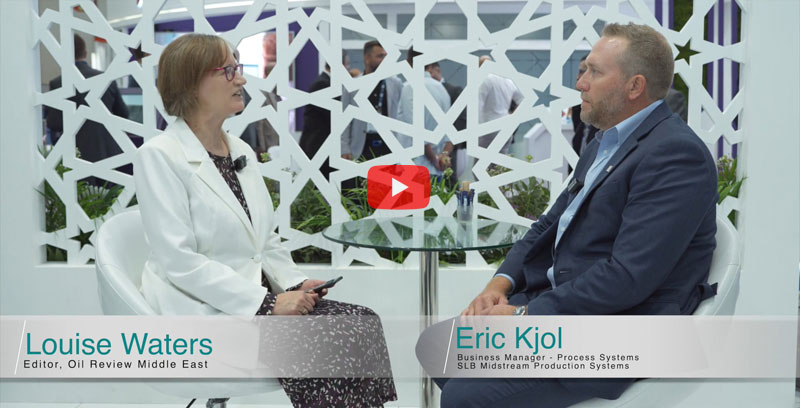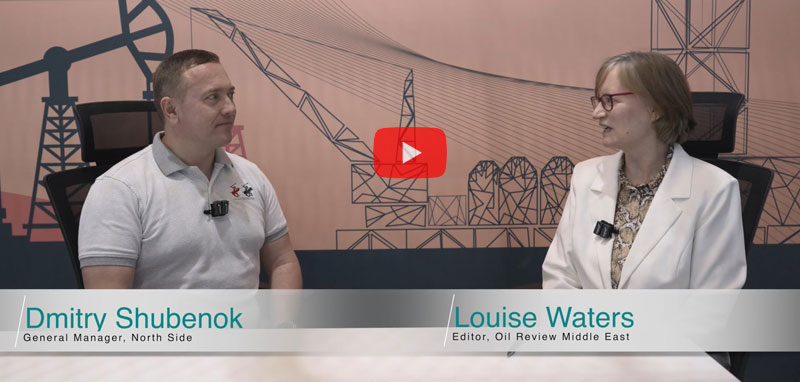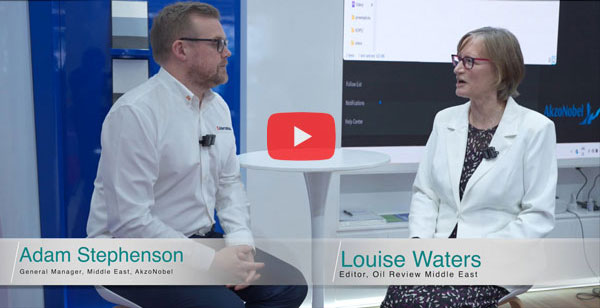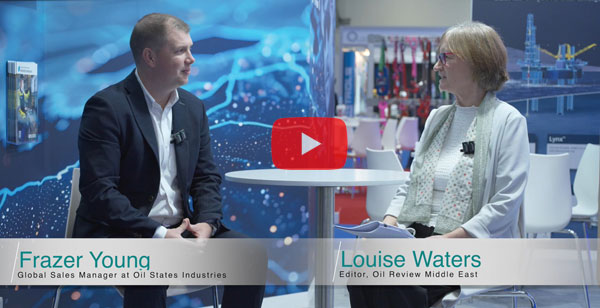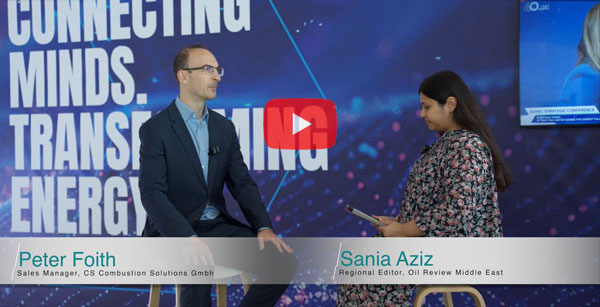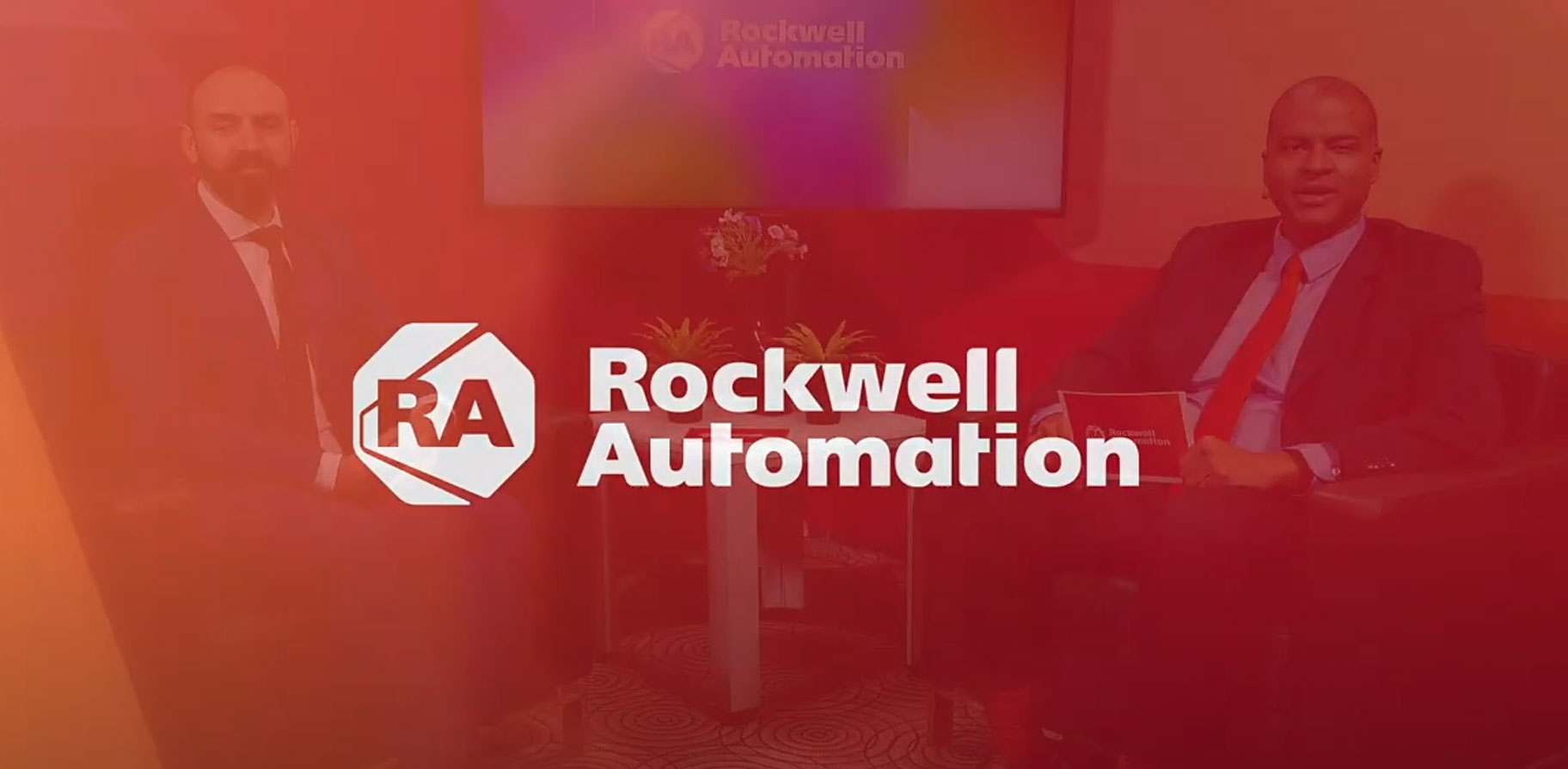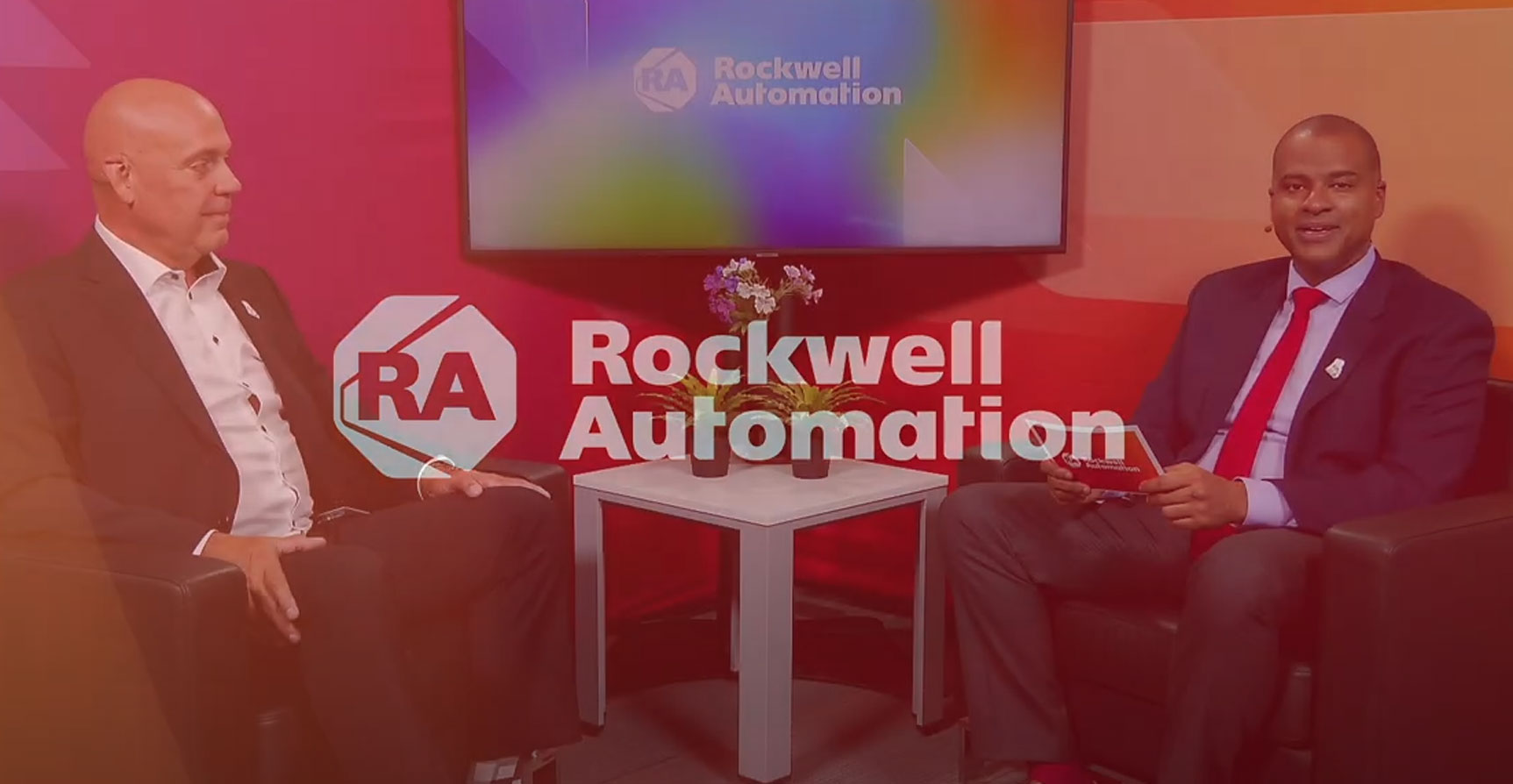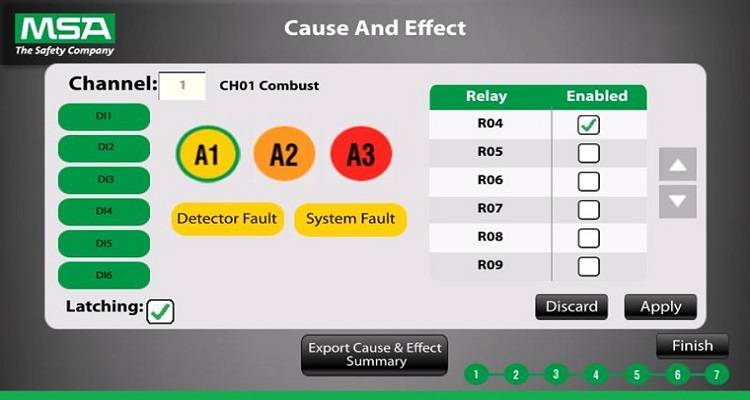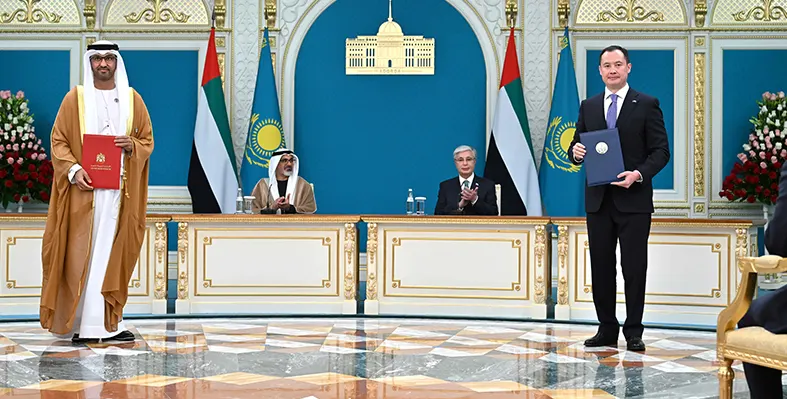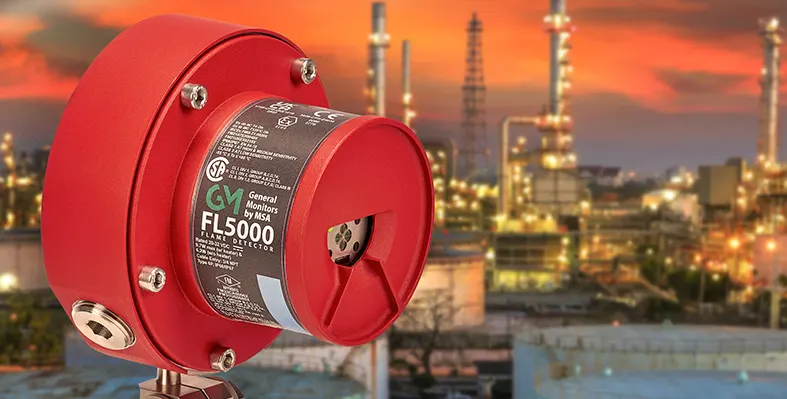In The Spotlight

The UAE can lead by example in demonstrating how hydrogen can be safely and effectively harnessed as a clean energy source.
The importance of hydrogen safety systems
Andrew Dennant, general manager for HIMA Middle East FZE highlights the need for advanced safety systems to be integrated into the hydrogen value chain to ensure the successful and secure adoption of hydrogen in line with the UAE's sustainability goals
As the global energy landscape transitions toward sustainability, hydrogen has emerged as a promising resource, particularly for nations such as the UAE, where clean energy and sustainability are central to national priorities. While hydrogen offers substantial potential as an energy source and reduces carbon emissions, its safe use requires advanced functional safety solutions, especially in large-scale industrial applications.
The role of hydrogen in a sustainable future
Hydrogen is gaining increasing attention as a viable alternative to traditional fossil fuels. Currently, most hydrogen used in industrial processes is derived from natural gas, commonly called grey hydrogen. However, green hydrogen, produced from water using renewable energy sources such as wind or solar power, is becoming increasingly significant. This process enables a substantial reduction in carbon emissions, positioning green hydrogen as a key component in the transition to a global zero-emission energy system.
In the UAE, green hydrogen is expected to play a crucial role in decarbonising various sectors, including power generation, transportation and heavy industry. While hydrogen’s adoption remains limited, its use is anticipated to grow significantly as both technology and infrastructure continue to evolve.
Safe use of hydrogen in industrial applications
Hydrogen is already widely utilised in industrial processes, such as ammonia production for fertilisers and in high-temperature manufacturing processes. Despite its advantages, hydrogen poses unique safety challenges due to its highly flammable nature. Leaks or uncontained releases of hydrogen can result in significant safety hazards. Therefore, hydrogen must be handled with the utmost care during production, storage and transportation.
Ensuring the safe use of hydrogen in industrial settings requires the deployment of advanced safety solutions. These systems must be designed to mitigate the specific application risks if hydrogen is to be used safely throughout their entire lifecycle.
Functional safety solutions for hydrogen
In large-scale operations, such as power plants or industrial facilities, advanced safety systems are essential for managing the inherent risks of hydrogen. A key example is the hydrogen production process, which involves the use of electrolysers to split water into hydrogen and oxygen. These systems require comprehensive safety functions to monitor and safeguard critical factors such as pressure and temperature. As the scale of hydrogen production increases, the complexity and sophistication of safety systems must evolve to match the rising risks associated with large-scale operations.
Transportation and storage: the key challenges
Transportation and storage of hydrogen present additional safety challenges. Due to hydrogen’s molecular properties, it is a highly permeable gas that can leak through even the smallest of cracks in pipelines, posing significant risks. To prevent leaks, advanced leak detection systems are essential. These systems monitor pipelines and storage tanks, providing early warnings and enabling swift corrective action in the event of a leak. Hydrogen storage also requires specialised safety measures. Safety protocols must ensure that storage facilities are equipped with fail-safe systems to mitigate potential risks.
Hydrogen in public transportation: safe and clean
In the UAE, hydrogen is being explored as an alternative fuel for public transportation. Hydrogen-powered buses, trains and other vehicles offer a cleaner alternative to conventional fossil fuel-powered transportation, especially in urban areas where reducing emissions is a priority. However, the integration of hydrogen into public transportation systems requires careful planning and implementation of advanced safety measures.
Safety systems must be developed to manage the use of electricity or hydrogen, depending on the infrastructure. In areas without such infrastructure, hydrogen may serve as the primary energy source. This hybrid approach ensures the safe and efficient operation of hydrogen-powered transportation.
Smart security for safe hydrogen use
As the use of digital technologies and automation in hydrogen systems increases, cybersecurity becomes an increasingly critical aspect of functional safety. The potential for cyberattacks on hydrogen production, storage and transportation systems presents a significant risk to safe and reliable operations. Therefore, it is essential to implement robust cybersecurity measures to protect these systems from malicious threats.
As the UAE continues to innovate in hydrogen technology, safeguarding these systems from cyber threats will be as crucial as the physical safety protocols in place to protect against other risks.
Looking ahead
The UAE is well-positioned to become a global leader in hydrogen production, particularly with its strong commitment to clean energy. However, to fully realise the potential of hydrogen as a key component of the UAE’s energy strategy, advanced safety solutions must be integrated across the entire hydrogen value chain. From production and storage to transportation and end use, these safety systems must evolve in tandem with technological advancements to mitigate risks and ensure the safe and efficient use of hydrogen.
By prioritising functional safety solutions, the UAE can lead by example in demonstrating how hydrogen can be safely and effectively harnessed as a clean energy source, further supporting the nation’s ambitious energy goals and contributing to global efforts toward a sustainable, zero-emission future.
Qatar looks to boost LNG trading business
Qatar plans to significantly boost its LNG trading business to complement its expanding domestic production and is not worried about a supply glut, according to Energy Minister and CEO of QatarEnergy Saad Sherida Al-Kaabi
Speaking at the Qatar Economic Forum, as reported by Bloomberg, the minister said QatarEnergy’s trading unit is already handling 10 million tons of physical LNG annually, more than 50% of which is non-Qatari volumes, and is seeking to increase this to around 30-40 mn tons of non-Qatari LNG by 2030.
The world’s second-biggest LNG producer typically sells its own output through long-term contracts. Some spot cargoes from Qatar are sold via QatarEnergy’s trading business, which also buys and sells third-party volumes. As global demand for LNG grows, flexible and short-term volumes allow sellers and buyers to quickly react to market volatility.
Qatar is also expanding its own production from 77 million tons now to 160 million tons of LNG, both domestically as well as at its project in the USA. The company has 70 ships today and is adding 128 more, as not all volumes will be locked in long-term contracts, Al-Kaabi said.
Al-Kaabi said there is room for growing supply from the USA, the world’s top-LNG producer, as well as Qatar. US volumes typically go to Europe and South America and Qatari LNG will predominately serve Asia. The need for the fuel and electricity is rising globally with population growth and the expansion of AI, Al-Kaabi said.
“We need all that volume,” he said. “The need for electricity and power is huge. So we are not worried at all about having a supply glut or anything like that.”
This bullish forecast for LNG demand is corroborated by Shell, which in its LNG Outlook 2025 forecasts that global demand for LNG will rise by around 60% by 2040 to reach 630-718mn tonnes a year, largely driven by economic growth in Asia, the need to decarbonise heavy industry and transport and the impact of energy-intense AI.
QatarEnergy is discussing sales of additional volumes with buyers in China and India, as well as counterparts in other countries, the minister said.
QatarEnergy continues to implement projects to expand LNG production from the North Field, the largest non-associated natural gas field in the world. The North Field East (NFE) project will raise Qatar’s LNG production capacity from its current 77mn metric tons per year (MTPA) to 110 MTPA. NFE represents the first phase of expansion; the second phase, the North Field South (NFS) project, will further increase Qatar’s LNG production capacity to 126 MTPA. A third phase, the North Field West (NFW) project, will boost Qatar’s LNG production to 142 MTPA by the end of 2030.
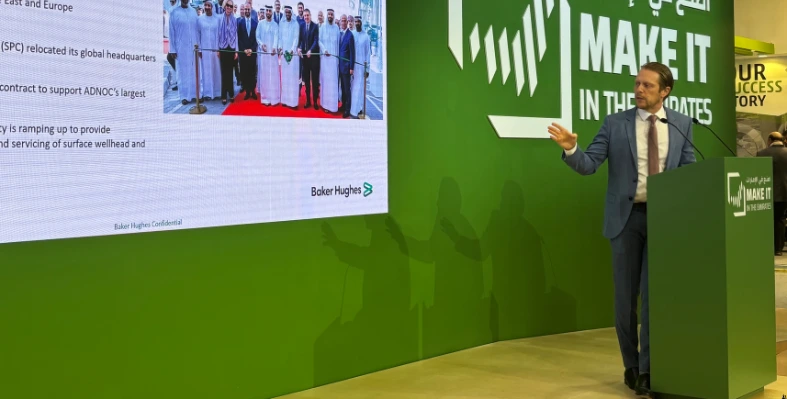
Technology and innovation are at the core of Baker Hughes' UAE strategy. (Image source: Alain Charles Publishing)
Baker Hughes showcases AI's potential in the UAE's oil and gas industry
At the Make It In The Emirates forum in Abu Dhabi this week, Mohamed Nounou, account executive at Baker Hughes, highlighted the company’s investments and strategic capabilities in the UAE, demonstrating the country's potential as a global technology hub
"There is no better place than the UAE to really craft strategic partnerships," Nounou said, underscoring the country's unique business environment.
The company has established multiple state-of-the-art facilities across the UAE, each serving critical sectors in the energy and industrial technology landscape.
Their completions and wellbore intervention manufacturing facility, inaugurated in 2009 in the UAE, spans 10,000 sqm and produces 19,000 units annually, exporting specialised equipment to Africa, the Middle East, Asia, and Latin America.
"It's also worth mentioning that we are taking our global operational excellence and HSE experience and trying to make sure we bring it into this facility. We are making sure that we really try to put all the innovation that we have, and lessons learned across the board into this facility as well," said Nounou.
Another highlight is the recently inaugurated surface pressure control wellhead facility, which not only serves regional markets but has also prompted Baker Hughes to move its global headquarters for this business segment to Abu Dhabi.
"We've been enabled to build this facility by ADNOC," Nounou said, highlighting the critical role of strategic partnerships.
Technology and innovation are at the core of Baker Hughes' UAE strategy.
The company has forged critical partnerships with AIQ to drive AI solutions in the upstream industry, including a groundbreaking rate of penetration optimisation project that aims to transform drilling efficiency through real-time recommendations.
Their digital solutions facility, established in 2015, demonstrates commitment to technological advancement, featuring 20,000 sqm of integrated manufacturing, engineering, testing, and cybersecurity capabilities.
The facility supports digital transformation by offering services across asset performance management, industrial IoT, cybersecurity, and control systems, reflecting a strong alignment with the UAE’s push for smart industry.
Beyond oil and gas, Baker Hughes is expanding its industrial technology footprint, engaging with diverse stakeholders like Tata, Emirates Nuclear, and Emirates Global Aluminum.
The company is also supporting decarbonisation and clean energy goals through its work in hydrogen, geothermal energy, and carbon capture utilisation and storage (CCUS).
"We really believe in AI and the power of digital," Nounou stated, reflecting the company's forward-looking approach.
Middle East Process Engineering Conference (MEPEC) 2024
Venue:
Dhahran Expo, Dammam, Saudi Arabia
Dates:
6-8 May 2024
Website:
www.mepec.org
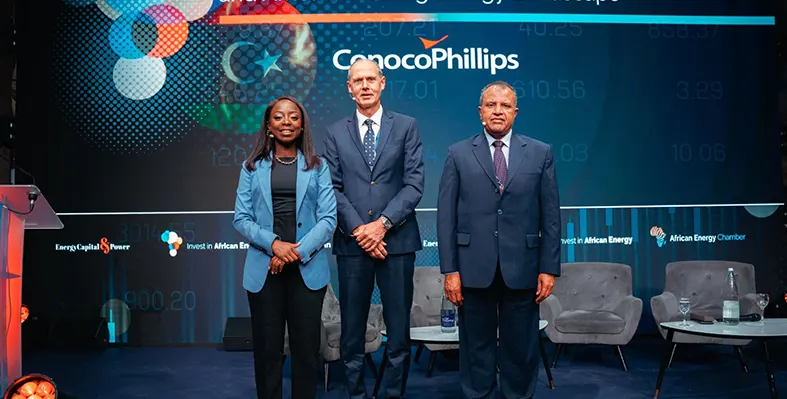
Libya's latest bid round has attracted international investor interest. (Image source: Energy Capital & Power)
Libya bid round attracts international investor interest
Libya’s latest upstream licensing round has already attracted more than 40 bids, according to Abdolkabir Alfakhry, Advisor to Libya’s Minister of Oil and Gas, signalling growing international interest in its largely untapped hydrocarbon potential
The bid round, launched in March, offers 22 blocks for exploration and development (11 Offshore and 11 Onshore) including areas with undeveloped discoveries estimated to contain a minimum of 2.0 Bboe in hydrocarbon resources.
The Minister, who was addressing a session sponsored by ConocoPhillips at the Invest in African Energy Forum in Paris, noted that results of the bid round are expected around November. “This will open a new environment for international companies to work in Libya.”
Libya’s assets are underexplored, particularly offshore, Alfakhry said, pointing to the country’s strategic location on the Mediterranean and its proximity to European markets as key competitive advantages.
“The bid round signals Libya’s integration into the global energy market,” he said.
Steiner Våge, president for Europe, the Middle East and Africa at ConocoPhillips, confirmed the U.S. major’s intention to deepen its engagement in Libya and across the African continent.
“Libya is a place where we can work – over the last few years, we’ve significantly increased production at the Waha concession,” said Vaage. “We want to see Libya prosper. We’d also like to transfer our knowledge, and we want to work with partners that have similar objectives – that is the starting point.”
At Libya Energy & Economic Summit 2025 earlier this year, Bashir Garea, technical advisor to the chairman of the NOC, highlighted the country’s immense oil and gas potential.
“We have 48 billion barrels of discovered but unexploited oil, with total potential estimated at 90 billion barrels, especially offshore,” he said, adding that Libya also has 122 trillion cubic feet of gas yet to be developed. “To unlock this potential, we need more investors and new technology, particularly for brownfield revitalisation.”
Oil majors including Eni Repsol, bp and OMV have recommenced exploration in Libya in recent months following a 10-year hiatus. However the recent eruption of violent clashes in Tripoli following the assassination of a powerful militia leader, shows that the current security situation is far from stable.
Advancing the localisation of critical oilfield technology in the UAE
The Make it in the Emirates Forum, designed to boost industrial development and accelerate the localisation of manufacturing, saw a plethora of agreements and partnerships signed to drive forward the localisation of critical oilfield technology and energy-related products and services
The event saw ADNOC partners across its supply chain commit to invest AED3bn (US$817mn) in manufacturing facilities across the UAE, in alignment with ADNOC’s current and future procurement requirements and the Make it in the Emirates initiative. They will create more than 3,500 highly skilled private sector jobs and manufacture a wide range of industrial products including pressure vessels, pipe coatings and fasteners. The facilities include newly operational sites, major expansions and investment commitments.
The facilities have been enabled by commercial agreements ADNOC signed with the companies under its In-Country Value (ICV) program as it plans to locally manufacture AED90bn (US$24.5bn) worth of products in its procurement pipeline by 2030, contributing to the country’s industrial development ambitions and creating employment as well as enhancing the resilience of its supply chain.
They included a strategic partnership agreement with Tubacex, a global leader in advanced tubular solutions, which grants ADNOC perpetual and exclusive rights to utilise Tubacex’s Sentinel Prime premium tubular joint connection technology, which is used for completing oil and gas wells and is designed to handle extreme conditions such as deep-water wells and carbon capture.
Tubacex will establish a dedicated research and development (R&D) centre in Abu Dhabi, advancing the development of the country’s industrial base. The facility will act as a hub for advanced engineering and train highly skilled technicians in-country, contributing to the development of local talent.
Yaser Saeed Almazrouei, ADNOC executive director, People, Commercial and Corporate Support, said, “We welcome our partners’ commitment to advancing local manufacturing through their investments in these state-of-the-art facilities which will strengthen the UAE’s industrial base and create highly skilled private sector jobs. These investments reflect ADNOC’s ongoing drive to support the ‘Make it in the Emirates’ initiative and localise strategic industrial capabilities through our In-Country Value program.”
ADNOC announced the award of contracts valued at AED543mn (US$147.8mn) to nine of its suppliers for locally made industrial products to be used across its value chain. They included Al Ghaith Industries, Union Chlorine LLC, C1 Water Industries LLC, RAK CHEM Industries and EMOCHEM. The agreements were enabled by ADNOC’s In-Country Value (ICV) program and span a diverse range of products including personal protective equipment (PPE), chemicals for drilling and production, valves, biodiesel and corrosion inhibitors. The agreements will strengthen the resilience of ADNOC’s supply chain, reduce reliance on imports and create more private sector jobs for Emiratis.
ADNOC Logistics and Services announced a proof-of-concept trial it has selected to assess the suitability of US-based REGENT’s electric seaglider for transporting personnel to and from offshore energy infrastructure. REGENT’s ‘Viceroy’ seaglider – a next-generation maritime craft – combines the speed of an aircraft with the convenience of a boat, offering high-speed, zero-emission transport. The proof-of-concept is the first phase in a potential multi-stage deployment that could see the technology incorporated more widely across ADNOC L&S’s offshore logistics operations.
REGENT will manufacture its electric seagliders in the UAE and will provide aftermarket services such as maintenance, boosting local manufacturing capabilities and strengthening the UAE’s industrial base. The proof-of-concept trial will also be managed by a UAE-based seaglider operator, delivering additional in-country value and positioning the UAE as a hub for advanced maritime innovation. The proof-of-concept trial aligns with ADNOC Group’s broader Net Zero by 2045 ambition.
NMDC Group, a global leader in engineering, procurement, construction (EPC), and marine dredging signed a number of agreements and partnerships at the Forum, aligning with Make it in the Emirates ambitions to drive forward industrial growth. The company signed a collaboration agreement with Jiangsu Juxin Petroleum Steel Pipe, with the long-term aim to establish fabrication facilities in the UAE for metallic pipes to be primarily used in the dredging sector.
NMDC Energy signed an MoU with Al Gharbia, the Abu Dhabi based advanced pipeline manufacturer, to explore ways to accelerate pipe production in the UAE to meet local and regional demand. Al Gharbia is one of the most technologically advanced Longitudinally Submerged Arc Welded (LSAW) Pipe manufacturers in the world and one of the first large scale manufacturers to embrace industry 4.0.
While NMDC LTS, a business vertical of NMDC Group, announced the establishment of a Joint Venture with Chaoda to establish a facility in the UAE that will assemble, fabricate, and distribute valves to be used in the energy sector.
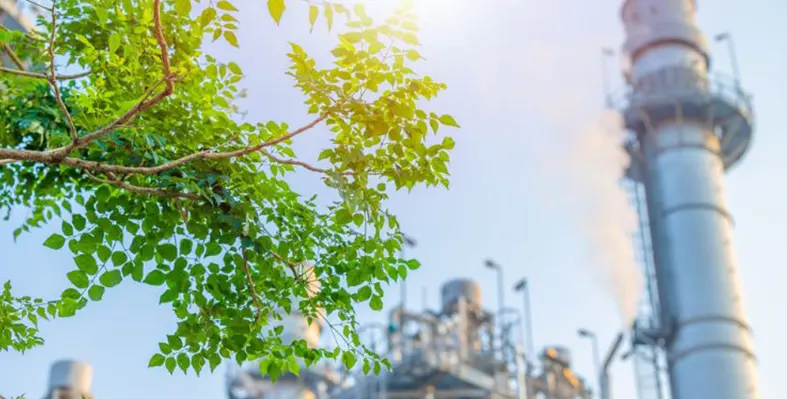
The petrochemical industry is increasingly turning its attention to chemical recycling. (Image source: Synergy)
Circular chemistry: chemical recycling and the petrochemical industry
As environmental concerns and regulatory pressures gain precedence, the petrochemical industry is increasingly turning its attention to chemical recycling
Often positioned as a potential game-changer, this technology seeks to offer a more sustainable path by converting plastic waste back into its original chemical components, enabling the production of new materials with properties comparable to those made from virgin feedstocks. Its attractiveness lies in addressing the twin evils – the plastic waste crisis and the need for higher-quality recycled materials.
How does chemical recycling work?
Chemical recycling, also referred to as advanced recycling, differs from mechanical recycling in both process and potential. Rather than grinding and melting plastics, it involves breaking down polymers into monomers or other base chemicals through processes such as pyrolysis, gasification, or depolymerisation. This allows for the creation of new plastics suitable for applications that require high purity, including food-grade packaging, where mechanically recycled plastics often fall short.
Several companies around the world have begun to scale up their chemical recycling initiatives.
• ExxonMobil, for example, has announced plans to invest US$200mn to expand its chemical recycling capabilities at its Baytown and Beaumont complexes in Texas. With its proprietary Exxtend technology, the company aims to process up to half a million tons of plastic waste per year by 2027.
• In Europe, Eastman Chemical is building a US$1bn molecular recycling facility in France. Once operational, it is expected to recycle up to 160,000 tons of plastic waste annually using polyester renewal technology.
• In India, Reliance Industries has become a pioneer in this space, producing circular polymers at its Jamnagar refinery, which has received ISCC-Plus certification to ensure sustainability and traceability.
However, the economic challenges associated with chemical recycling are substantial. These technologies are energy-intensive, resulting in higher operational costs compared to traditional recycling or even the production of virgin plastics. In some cases, chemically recycled polyethylene terephthalate (PET) can cost two to three times more than its virgin counterpart, limiting its competitiveness. Additionally, the process often requires clean and sorted plastic waste as feedstock, which is difficult to obtain in many regions due to inadequate waste segregation and contamination. This issue not only affects cost but also scalability.
Advantages of chemical recycling
From an environmental standpoint, chemical recycling does offer certain advantages. Studies indicate that pyrolysis — a commonly used method in chemical recycling — can emit up to 50% less CO₂ than the incineration of mixed plastic waste. The process also has the potential to eliminate hazardous substances embedded in plastics, such as legacy chemicals and substances of very high concern (SVHC), resulting in cleaner end-products. Nevertheless, these benefits must be weighed against the significant energy inputs required for these processes. Without low-carbon energy sources or efficiency improvements, the net environmental gains may be limited.
Looking ahead, the development of chemical recycling will depend on a combination of technological, regulatory, and economic factors. Enhancing waste collection and sorting infrastructure will be crucial for improving feedstock quality. Policy frameworks that clearly define recycled content and support traceability will help create market confidence. Meanwhile, collaboration between governments, research institutions, and industry stakeholders could accelerate innovation and reduce costs over time.
While chemical recycling is unlikely to single-handedly resolve the petrochemical sector’s sustainability challenges, it may play a valuable role within a broader strategy for circularity. When complemented by upstream design changes, responsible consumption, mechanical recycling, and waste minimization efforts, it has the potential to contribute meaningfully to the sector's transition.
Whether it ultimately transforms the petrochemical industry or becomes a niche complement to existing methods will depend on how these challenges are addressed in the years to come.
This article is authored by Synergy Consulting IFA.

Retina at-bit imaging provides precise measurements at the critical point of first contact between the drill bit and the formation. (Image source: SLB)
SLB launches Retina at-bit imaging
SLB has launched Retina at-bit imaging, which converts measurements taken at the drill bit into detailed, high quality borehole images
Successfully tested in the Middle East, Retina at-bit imaging provides precise measurements at the critical point of first contact between the drill bit and the formation, providing unsurpassed image clarity in large hole sizes as drilling commences and the borehole diameter reduces progressively toward the reservoir section, thereby enabling identification of formation characteristics to optimise drilling efficiency, formation evaluation and safety.
It works by using a PDC drill bit tailored with the latest design, architecture and cutter technologies to accommodate sensors for measuring forces at the bit face. It captures formation details to visualise and characterise layers, bedding dips, thin beds, fractures, and textural variations without interference from any type of drilling fluid. The raw data is processed to create a high-resolution borehole image for formation characterisation and rock properties qualification. High-resolution images are important for geological characterisation from the outset of drilling, revealing potential well-related expenditures such as mud-loss zones, hard drilling intervals and stuck-pipe events — which can add days to complete the well, incur non-productive time, and increase safety risks.
Retina addresses the limitations of traditional imagers, which are often restricted by operational factors like drilling fluid type and wellbore damage, and often not usable in the reservoir access intervals due to borehole size limitations.
Field test data from land operations in the Middle East have demonstrated Retina's versatility and effectiveness. In one field test in the Middle East, Retina revealed the presence of fractures and vugs (small cavities or pores within the rock) in carbonate formations, providing critical information for predicting and preventing mud losses. During another field test, the tool also provided high-resolution images of stylolites, which act as pressure barriers, allowing for a better understanding of productive zones.
“Retina provides an unparalleled view of the formation and its characteristics downhole, enabling better-informed decisions from the start,” said Cecilia Prieto, president, Well Construction, SLB.
“This leading-edge technology marks a significant advancement in borehole imaging, providing drillers with critical insight in situations where it was previously impossible. With imaging at the bit, before the formation is affected by drilling fluids, the exceptional resolution unlocks new opportunities around drilling, fluid management, and completions, leading to significant risk reduction and production optimisation.”
SAFEEN Group webinar addresses future of offshore operations
Oil Review Middle East hosted a very well-attended webinar on 20 November on the future of offshore operations, in association with SAFEEN Group, part of AD Ports Group
The webinar explored the latest trends and challenges in the rapidly evolving world of offshore operations, focusing on groundbreaking innovations that are driving sustainable and efficient practices. In particular, it highlighted SAFEEN Green – a revolutionary unmanned surface vessel (USV), setting new benchmarks for sustainable and efficient maritime operations.
Erik Tonne, MD and head of Market Analysis at Clarksons, gave an overview of the offshore market, highlighting that current oil price levels are supportive for offshore developments, and global offshore capex is increasing strongly. The Middle East region will see significant capex increase over the coming years, with the need for rigs and vessels likely to remain high. Offshore wind is also seeing increased spending. Global rig activity is growing, while the subsea EPC backlog has never been higher, with regional EPC contracts seeing very high activity. Tonne forecast that demand for subsea vessels and other support vessels will continue to increase.
Tareq Abdulla Al Marzooqi, CEO SAFEEN Subsea, AD Ports Group, introduced SAFEEN Subsea, a joint venture with NMDC, which offers reliable and innovative survey, subsea and offshore solutions to support major offshore and EPC projects across the region. He highlighted the company’s commitment to sustainability, internationalisation and local content, and how it is a hub for innovations and new ideas, taking conceptual designs and converting them to commercial projects. A key project is SAFEEN Green, which offers an optimised inspection and survey solution.
Tareq Al Marzooqi and Ronald J Kraft, CTO, Sovereign Global Solutions ME and RC Dock Engineering BV. outlined the benefits and capabilities of SAFEEN Green as compared with commercial vessels, in terms of safety, efficiency, profitability and sustainability. It is 30-40% more efficient through the use of advanced technologies, provides a safer working environment given it is operated 24/7 remotely from a control centre, and offers swappable payload capacity. Vessels are containerised and can be transported easily to other regions. In terms of fuel consumption, the vessel is environment-friendly and highly competitive, reducing emissions by 90% compared with conventional vessels, with the ability to operate on 100% biofuel.
As for future plans, SAFEEN Green 2.0 is under development, which will be capable of carrying two inspection work-class ROVs simultaneously. A priority will be to collect data to create functional AI models for vessels and operations, with the first agent-controlled payload systems in prospect by around 2027.
To view the webinar, go to https://alaincharles.zoom.us/rec/share/mNHjZhAhQzn1sPzmFWZCgrq7_SckfLRcSb4w81I7aVlokO9sgHM_zVeOqgN3DgJS.bO4OIRqNeFP09SPu?startTime=1732095689000

The UAE can lead by example in demonstrating how hydrogen can be safely and effectively harnessed as a clean energy source.
The importance of hydrogen safety systems
Andrew Dennant, general manager for HIMA Middle East FZE highlights the need for advanced safety systems to be integrated into the hydrogen value chain to ensure the successful and secure adoption of hydrogen in line with the UAE's sustainability goals
As the global energy landscape transitions toward sustainability, hydrogen has emerged as a promising resource, particularly for nations such as the UAE, where clean energy and sustainability are central to national priorities. While hydrogen offers substantial potential as an energy source and reduces carbon emissions, its safe use requires advanced functional safety solutions, especially in large-scale industrial applications.
The role of hydrogen in a sustainable future
Hydrogen is gaining increasing attention as a viable alternative to traditional fossil fuels. Currently, most hydrogen used in industrial processes is derived from natural gas, commonly called grey hydrogen. However, green hydrogen, produced from water using renewable energy sources such as wind or solar power, is becoming increasingly significant. This process enables a substantial reduction in carbon emissions, positioning green hydrogen as a key component in the transition to a global zero-emission energy system.
In the UAE, green hydrogen is expected to play a crucial role in decarbonising various sectors, including power generation, transportation and heavy industry. While hydrogen’s adoption remains limited, its use is anticipated to grow significantly as both technology and infrastructure continue to evolve.
Safe use of hydrogen in industrial applications
Hydrogen is already widely utilised in industrial processes, such as ammonia production for fertilisers and in high-temperature manufacturing processes. Despite its advantages, hydrogen poses unique safety challenges due to its highly flammable nature. Leaks or uncontained releases of hydrogen can result in significant safety hazards. Therefore, hydrogen must be handled with the utmost care during production, storage and transportation.
Ensuring the safe use of hydrogen in industrial settings requires the deployment of advanced safety solutions. These systems must be designed to mitigate the specific application risks if hydrogen is to be used safely throughout their entire lifecycle.
Functional safety solutions for hydrogen
In large-scale operations, such as power plants or industrial facilities, advanced safety systems are essential for managing the inherent risks of hydrogen. A key example is the hydrogen production process, which involves the use of electrolysers to split water into hydrogen and oxygen. These systems require comprehensive safety functions to monitor and safeguard critical factors such as pressure and temperature. As the scale of hydrogen production increases, the complexity and sophistication of safety systems must evolve to match the rising risks associated with large-scale operations.
Transportation and storage: the key challenges
Transportation and storage of hydrogen present additional safety challenges. Due to hydrogen’s molecular properties, it is a highly permeable gas that can leak through even the smallest of cracks in pipelines, posing significant risks. To prevent leaks, advanced leak detection systems are essential. These systems monitor pipelines and storage tanks, providing early warnings and enabling swift corrective action in the event of a leak. Hydrogen storage also requires specialised safety measures. Safety protocols must ensure that storage facilities are equipped with fail-safe systems to mitigate potential risks.
Hydrogen in public transportation: safe and clean
In the UAE, hydrogen is being explored as an alternative fuel for public transportation. Hydrogen-powered buses, trains and other vehicles offer a cleaner alternative to conventional fossil fuel-powered transportation, especially in urban areas where reducing emissions is a priority. However, the integration of hydrogen into public transportation systems requires careful planning and implementation of advanced safety measures.
Safety systems must be developed to manage the use of electricity or hydrogen, depending on the infrastructure. In areas without such infrastructure, hydrogen may serve as the primary energy source. This hybrid approach ensures the safe and efficient operation of hydrogen-powered transportation.
Smart security for safe hydrogen use
As the use of digital technologies and automation in hydrogen systems increases, cybersecurity becomes an increasingly critical aspect of functional safety. The potential for cyberattacks on hydrogen production, storage and transportation systems presents a significant risk to safe and reliable operations. Therefore, it is essential to implement robust cybersecurity measures to protect these systems from malicious threats.
As the UAE continues to innovate in hydrogen technology, safeguarding these systems from cyber threats will be as crucial as the physical safety protocols in place to protect against other risks.
Looking ahead
The UAE is well-positioned to become a global leader in hydrogen production, particularly with its strong commitment to clean energy. However, to fully realise the potential of hydrogen as a key component of the UAE’s energy strategy, advanced safety solutions must be integrated across the entire hydrogen value chain. From production and storage to transportation and end use, these safety systems must evolve in tandem with technological advancements to mitigate risks and ensure the safe and efficient use of hydrogen.
By prioritising functional safety solutions, the UAE can lead by example in demonstrating how hydrogen can be safely and effectively harnessed as a clean energy source, further supporting the nation’s ambitious energy goals and contributing to global efforts toward a sustainable, zero-emission future.





